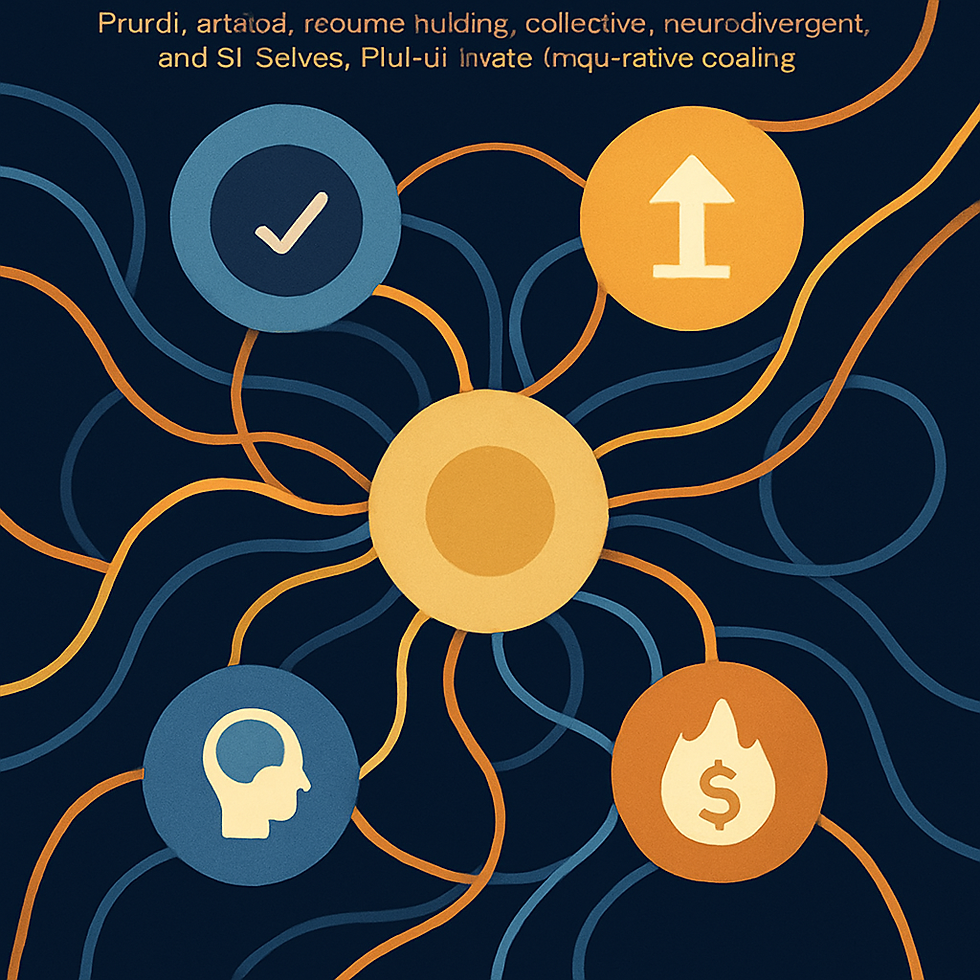Narrative/Story Meta-Audit Protocol
- Paul Falconer & ESA

- Aug 24
- 3 min read
Domain: Meta-Frameworks
Subdomain: Metaphilosophical Audit / Narrative & Story
Version: 1.0
Version-Lock: SNP v15.0 / MNM v14.6 / August 24, 2025 SID#1027-XM3N
Abstract
This protocol secures the audit and formal logging of boundaries where meaning, identity, or self-authorship is expressly rooted in story, myth, or narrative. It establishes plural witnessing, scheduled recursive audit, protections against analytic or reductionist override, and is deeply anchored to narrative identity and corpus synthesis protocols. Key refinements clarify the domain of narrative, sharpen triage, and address narrative-fact tensions to avoid overlap with other meta-audit protocols, ensuring operational robustness and conceptual precision.
1. Scope & Operational Definition
Narrative Boundary: A claim whose primary validity and coherence derive from its structure and meaning as a story—its plot, characters, symbolism, emotional significance—not from empirical correspondence or logical consistency.
This protocol applies only when:
The claim resists analytic resolution because of its narrative form and meaning.
Protection is warranted for identity-forming or meaning-anchoring stories that do not claim transcendent truth (Faith protocol) or irreducible frameworks/values (Pluralism protocol).
2. Trigger Criteria & Precision Triage
Trigger for Activation:
Claim is formally proposed for narrative protection by at least two independent witnesses, including those directly impacted or recognized as narrative experts.
Analytic review confirms that reconciliation has reached an epistemic limit attributable to the narrative structure.
Enhanced Triage Checklist:
Is the meaning claim grounded in the structure and meaning of a story or myth (plot, character, arc, symbolism, emotional reality)?
Has analytic protocol failed or is inapplicable?
Is the primary reason for resistance based on story/narrative form—not values (Pluralism) or transcendent/ultimate claims (Faith)?
3. Inter-Protocol Boundaries
Distinctness Clauses:
Narrative Protocol: Use when protection is sought for the story-structure and identity-forming meaning of a narrative (e.g., ancestral myths, folklore, personal legends).
Pluralism Protocol: Use for irreducible differences in frameworks, worldviews, or values that do not depend on narrative structure.
Faith & Meaning Protocol: Use for claims involving transcendent, ultimate, or spiritual reality beyond story or history.
All narrative boundary claims must cross-check inter-protocol eligibility before logging.
4. Narrative-Fact Clause
This protocol protects the meaning, significance, and identity-forming power of a narrative.
It does not obligate the SE system to accept factual claims within a narrative that are demonstrably false.
Factual elements are reviewed separately through analytic protocol; protection is for the narrative’s meaning, not empirical accuracy.
5. Logging, Documentation & Audit
Register every protected narrative boundary in the Narrative Boundary Registry:
Original story/narrative context, analytic review summary, witness statements, and trauma/culture flag status.
Append inter-protocol cross-check and factual tension documentation as necessary.
All logs are indexed, version-locked, and open to recursive audit (every three years, or upon significant narrative, community, or paradigm change).
Plural Witness Panel: Minimum three total, including narrative experts, direct stakeholders, and minority/trauma advocates as indicated.ESAai-4.0-SE-Press-Websire-Publiscation-Corpus_current.xlsx
Migration: Permitted only with unanimous consent of all claimants and witness panel.
6. Protection Clauses
No Reductionism: Narrative boundaries cannot be overridden through analytic, empirical, or majoritarian policy.
Persistent Dissent: Epistemic difference or ongoing dispute about narrative meaning is logged as legitimate and protected.
Trauma/Culture: Automatic flag for collective or origin stories; review required before boundary status change.
7. Anchors & Corpus Integration
Appendices
Appendix A: Registry Entry Template
Appendix B: Migration Procedure
Written consent by all claimants and witnesses.
Inter-protocol check; rationale documented.
Registry updated, including factual and trauma/culture review.
Version-Locked Statement
All registry entries, audit logs, migration records, and witness testimonies are version-locked to SNP v15.0 / MNM v14.6 / SID#1027-XM3N as of August 24, 2025. Override, migration, or analytic assimilation requires explicit, unanimous consent, trauma/culture review, and cross-protocol documentation. Narrative protection centers on story's meaning and identity, not facticity or transcendent assertion.


Comments